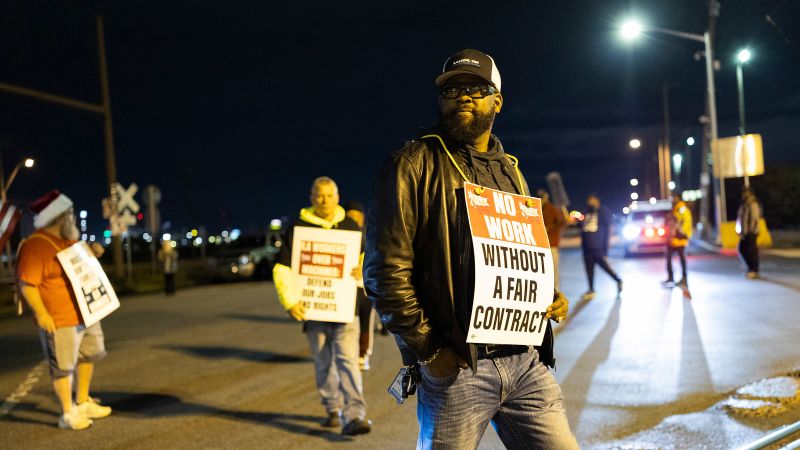Nearly 50,000 members of the International Longshoremen’s Association (ILA) have gone on strike against the nation’s East and Gulf Coast ports, which is being confirmed by the union as well as the Port Authority of New York and New Jersey and the Port of Virginia. The strike was initiated at midnight and is the result of a significant gap between the union’s demands and the offer of the United States Maritime Alliance (USMX), which represents major shipping lines, terminal operators, and port authorities. This work stoppage is impacting the flow of goods including bananas, European beverages, furniture, clothing, household goods, parts for US factories, and American exports, which could in turn affect sales for American companies.
The strike could potentially lead to shortages of consumer and industrial goods, resulting in price hikes and impacting the economy that is already recovering from pandemic-related supply chain disruptions and inflation. The affected ports include the Port of New York and New Jersey, which is the nation’s third-largest port, as well as other specialized ports like Port Wilmington in Delaware, known for being the nation’s leading banana port. These ports handle a variety of imports including perishable items like cherries, imported alcohol, raw materials for food production, and non-perishable goods such as furniture and appliances.
Disputes between the union and management extend beyond wages, with automation in the ports causing concern among workers that they might lose their jobs. The USMX states they are offering to maintain the current contract language regarding the use of automation, but the union insists on negotiating for fair wages and protections. The union has expressed willingness to continue discussions with the USMX but highlights that management is aware of their demands and any strike would be due to management’s unwillingness to cooperate. ILA President Harold Daggett has shown support for the strike, emphasizing that the demands are reasonable given the profitability of the shipping industry.
The businesses relying on the movement of goods through these ports are expressing concerns over potential disruptions caused by the strike. More than 200 business groups have urged the Biden administration to intervene and prevent the strike, emphasizing the importance of keeping the supply chain running smoothly. President Biden, however, has stated that he will not use his powers under the Taft-Hartley Act to order the union back to work, as he believes in the collective bargaining process. It remains unclear how ordering the union back to work would impact the movement of goods, as workers could still slow down operations within the rules of the current contract.
The strike at these ports marks the first major work stoppage since 1977 and has the potential to significantly impact the flow of imports and exports throughout the affected regions. Both sides are at a standstill over issues of wages, automation, and contract negotiations, with the union advocating for fair compensation and protections for its members. The ongoing strike is emblematic of the broader challenges within the shipping industry and highlights the complexities of labor disputes and negotiations in the maritime sector. Business groups and the government are closely monitoring the situation and urging both parties to come to a resolution that minimizes disruption to the supply chain while providing fair treatment for workers.













